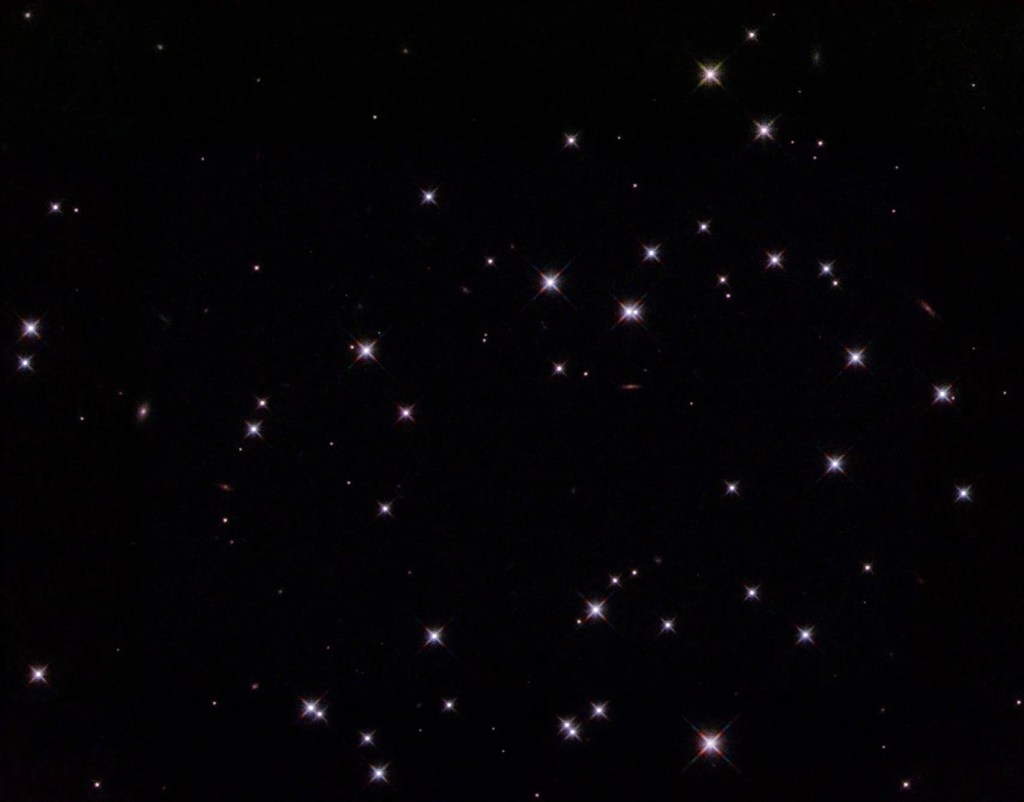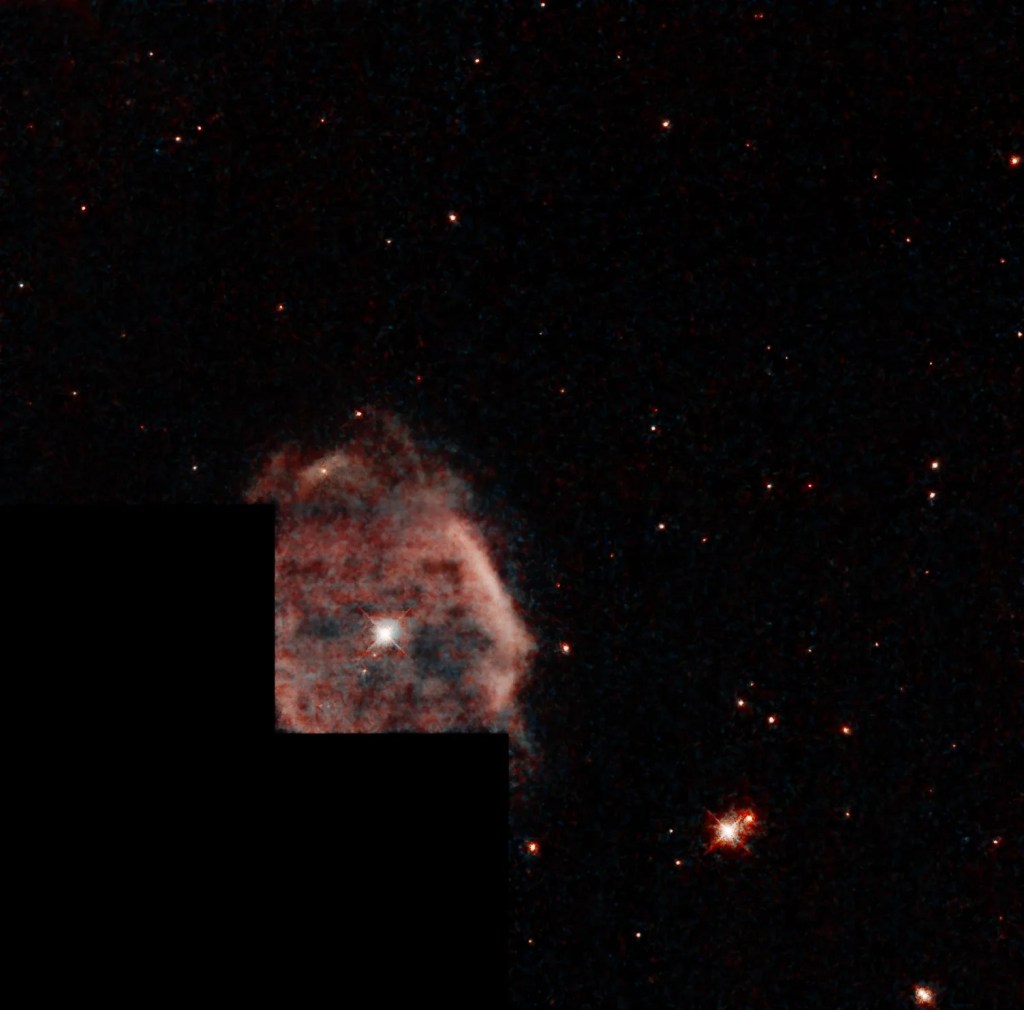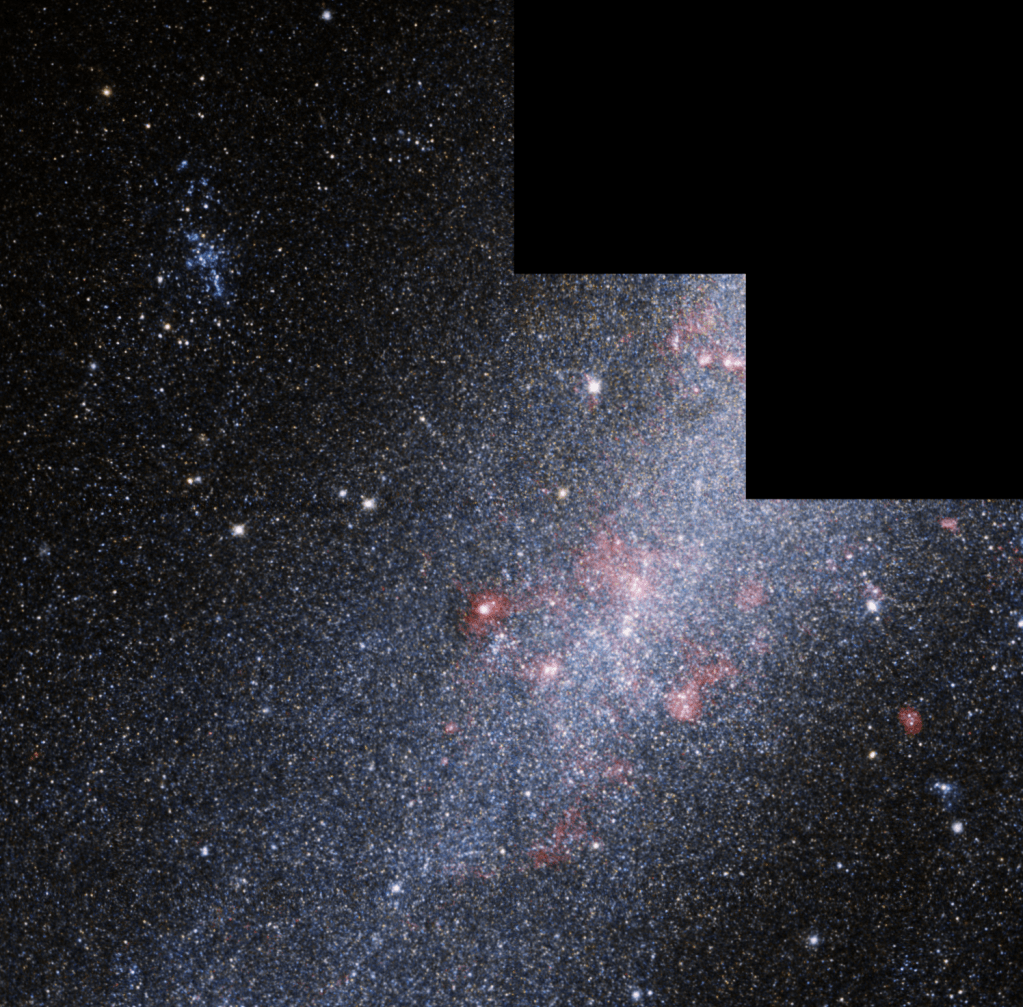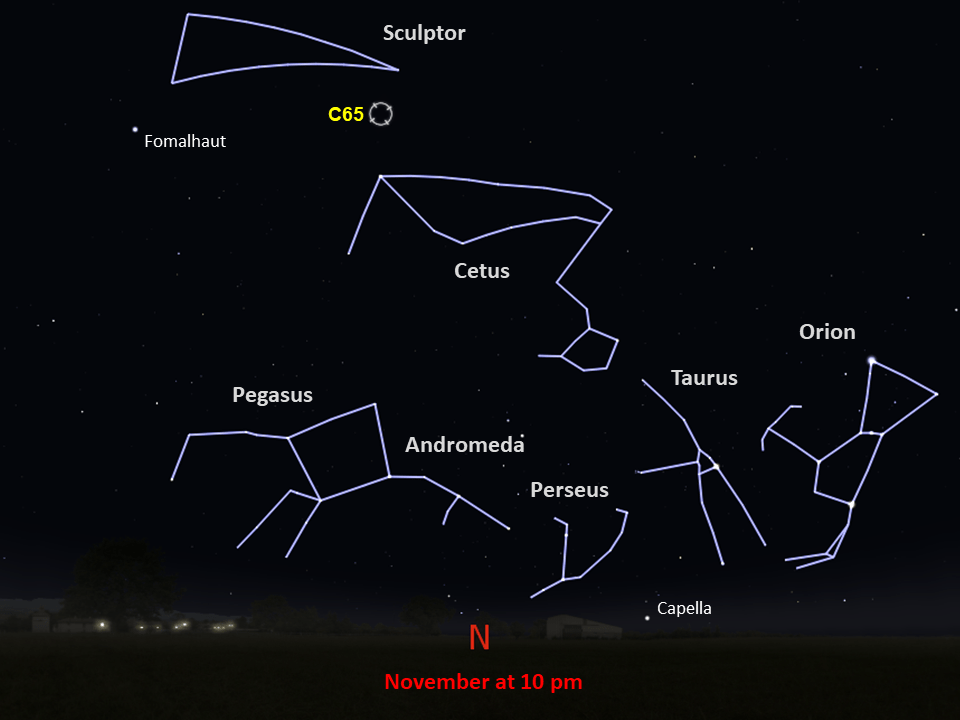Caldwell 65
Also called the Sculptor Galaxy, Caldwell 65 was discovered in 1783 by British astronomer Caroline Herschel while she was hunting for comets.
Distance
10 million light-years
Apparent Magnitude
7.6
constellation
Sculptor
object type
Spiral Galaxy

Caldwell 65 is a stunning spiral galaxy located around 10 million light-years from Earth. It has a disk-like appearance since we see it almost edge-on, which has led some to nickname it the Silver Coin or Silver Dollar Galaxy. Most people, however, call it the Sculptor Galaxy after the constellation it resides in. This galaxy is one of the nearest beyond our local neighborhood of galaxies, making it an ideal target for professional and amateur astronomers alike.
This Hubble image shows about half of the galaxy. Hubble studied the Sculptor Galaxy as part of a detailed survey called the ACS Nearby Galaxy Survey Treasury (ANGST) program, which resolved roughly 14 million stars in 69 galaxies. The survey explored galaxies in a region called the Local Volume, ranging in distance from 6.5 million to 13 million light-years from Earth. Hubble’s observations provided insight into the masses, structures, environments, and star-formation histories of these galaxies.

Dark dust clouds and scattered massive stars obscure much of the Sculptor Galaxy’s detail, which is why Hubble imaged it in both visible and infrared light with its Advanced Camera for Surveys (ACS). Infrared observations allow us to peer through the shrouds of dust, revealing details that are otherwise hidden from view. Thanks to Hubble’s observations, scientists have discovered that all of the dust in the Sculptor Galaxy is accompanied by frantic star formation, earning it the designation of a starburst galaxy.
With a magnitude of 7.6, this large galaxy is quite a sight even in small telescopes. The Sculptor Galaxy is best seen during the spring in the Southern Hemisphere. From the Northern Hemisphere, it appears low in the southern sky in the autumn.
For more information about Hubble’s observations of Caldwell 65, see:
NGC 253 from the ANGST Survey
ANGST Survey Galaxy – NGC 253
Behind a Dusty Veil Lies a Cradle of Star Birth
Hubble Probes the Violent Birth of Stars in Galaxy NGC 253
Glossary
Magnitude - The brightness of an astronomical object, represented by a number; bright objects have low numbers on the magnitude scale, while dim objects have high numbers.
Spiral Galaxy - A galaxy characterized by its spiral structure, with star-filled arms that extend out from the center of the galaxy and host regions of star formation.
Starburst Galaxy - A galaxy that experiences an incredibly high rate of star formation, using up its reservoir of gas in a relatively short period of time.
Explore Hubble's Caldwell Catalog
The following pages contain some of Hubble’s best images of Caldwell objects.

Also known as NGC 188, this group of stars formed from a large cloud of gas making the stars roughly…

This shell of gas is expanding outward, away from the dying star within.

This barred spiral galaxy was first spotted by British astronomer William Herschel in April 1793 in the constellation Draco.
































